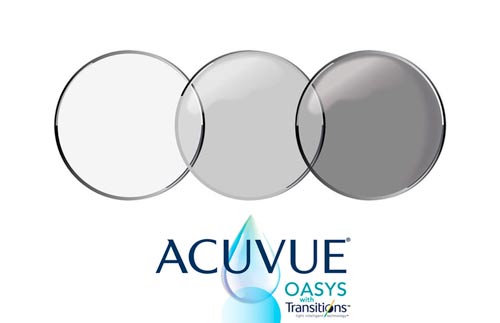Every year there are new contact lenses that become available; spherical, torics, and multifocals. This gives practitioners many options to find the best fit and visual options for our patients. Recently, a new option has become available. These lenses are the first of their kind. Acuvue Oasys with Transition Light Technology. These are the same Acuvue Oasys contacts we fit, same great fit, same great comfort, but with a photochromic filter.
The research for these lenses began 15 years ago. It is a combination of the Acuvue Oasys senificon A material and Transitions Light Intelligence Technology. The results are a lens that adapts to changing light indoors and outdoors.
I’m intrigued to say the least. On the Vistakon and Johnson and Johnson websites there are great details to help with the fitting and selling points for practitioners to inform patients about these new lenses. Some of the researched facts about the lenses are:
- 43% of patients had faster photo-stress recovery after exposure to bright lights. This can represent up to 5 seconds faster recovery of vision in the real world.
- 38% of patients had fewer issues with squinting from light sensitivity.
- 27% less impairment of vision when bright light reduces visibility or disrupts vision.
- 32% improved chromatic contrast (when one color stands out more than another)
 |
Trials for these lenses are now available to practitioners for fitting purposes. This gives patients the opportunity to give these lenses a try, and to make sure they are a lens that fits the patient’s needs, even if just for part time wear. They are cost effective, so they are an item that is new technology, but are actually affordable.
It will be interesting to see what the future brings for these lenses. Having these available in different colors of Transitions would be great, also to see if these lenses will ever be able to get to darker shades while in the eyes would benefit patients with active outdoor lifestyles. Until then, it is exciting to see a contact lens that can help contact lens wearers manage the issues that they have due to the changing light situations throughout the day.
To learn more about the applications for contact lenses now and possibilities for the future, check out our CE, Therapeutic Contact Lenses and Beyond, at www.2020mag.com/ce. And don’t forget about our CE BOGO Summer Sale! Enter code CESummerSale at checkout by July 7.













